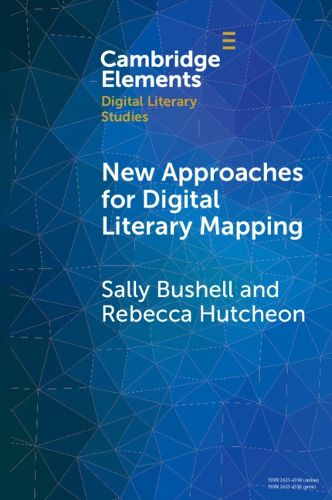Readings Newsletter
Become a Readings Member to make your shopping experience even easier.
Sign in or sign up for free!
You’re not far away from qualifying for FREE standard shipping within Australia
You’ve qualified for FREE standard shipping within Australia
The cart is loading…






This Element reconsiders what the focus of digital literary mapping should be for a subject like English Literature, what digital tools should be employed and to what interpretative ends. How we can harness the digital to find new ways of understanding spatial meaning in the Humanities? Section 1 provides a brief overview of the relationship between literature, geography and cartography and the emergence of literary mapping, providing a critique of current digital methods and making the case for new approaches. The second section turns to Russian theorist Mikhail Bakhtin and explores the potential of the 'chronotope' for literature as a way of structuring digital literary maps that provides a solution to the complexities of mapping time as well as space. Sections 3 and 4 then exemplify the method by applying it first to realist novels by Dickens and Hardy then the multiple states of J. M. Barrie's Peter Pan. This title is also available as Open Access on Cambridge Core.
$9.00 standard shipping within Australia
FREE standard shipping within Australia for orders over $100.00
Express & International shipping calculated at checkout
This Element reconsiders what the focus of digital literary mapping should be for a subject like English Literature, what digital tools should be employed and to what interpretative ends. How we can harness the digital to find new ways of understanding spatial meaning in the Humanities? Section 1 provides a brief overview of the relationship between literature, geography and cartography and the emergence of literary mapping, providing a critique of current digital methods and making the case for new approaches. The second section turns to Russian theorist Mikhail Bakhtin and explores the potential of the 'chronotope' for literature as a way of structuring digital literary maps that provides a solution to the complexities of mapping time as well as space. Sections 3 and 4 then exemplify the method by applying it first to realist novels by Dickens and Hardy then the multiple states of J. M. Barrie's Peter Pan. This title is also available as Open Access on Cambridge Core.